Current issue
Displaying 1-12 of 12 articles from this issue
- |<
- <
- 1
- >
- >|
Review Articles
-
2024 Volume 35 Issue 1 Pages 59-65
Published: April 27, 2024
Released on J-STAGE: April 27, 2024
Download PDF (3573K) -
2024 Volume 35 Issue 1 Pages 75-82
Published: April 27, 2024
Released on J-STAGE: April 27, 2024
Download PDF (930K)
Original Articles
-
2024 Volume 35 Issue 1 Pages 11-15
Published: February 25, 2024
Released on J-STAGE: February 25, 2024
Download PDF (1012K) -
2024 Volume 35 Issue 1 Pages 23-28
Published: April 27, 2024
Released on J-STAGE: April 27, 2024
Download PDF (1459K) -
2024 Volume 35 Issue 1 Pages 45-51
Published: April 27, 2024
Released on J-STAGE: April 27, 2024
Download PDF (3163K) -
2024 Volume 35 Issue 1 Pages 53-58
Published: April 27, 2024
Released on J-STAGE: April 27, 2024
Download PDF (625K) -
2024 Volume 35 Issue 1 Pages 67-74
Published: April 27, 2024
Released on J-STAGE: April 27, 2024
Download PDF (3514K)
Case Reports
-
2024 Volume 35 Issue 1 Pages 1-10
Published: February 25, 2024
Released on J-STAGE: February 25, 2024
Download PDF (5458K) -
2024 Volume 35 Issue 1 Pages 29-33
Published: April 27, 2024
Released on J-STAGE: April 27, 2024
Download PDF (5068K) -
2024 Volume 35 Issue 1 Pages 41-44
Published: April 27, 2024
Released on J-STAGE: April 27, 2024
Download PDF (2438K)
How to Do It: Techniques in Phlebology
-
2024 Volume 35 Issue 1 Pages 17-21
Published: April 27, 2024
Released on J-STAGE: April 27, 2024
Download PDF (492K) -
2024 Volume 35 Issue 1 Pages 35-39
Published: April 27, 2024
Released on J-STAGE: April 27, 2024
Download PDF (2224K)
- |<
- <
- 1
- >
- >|
